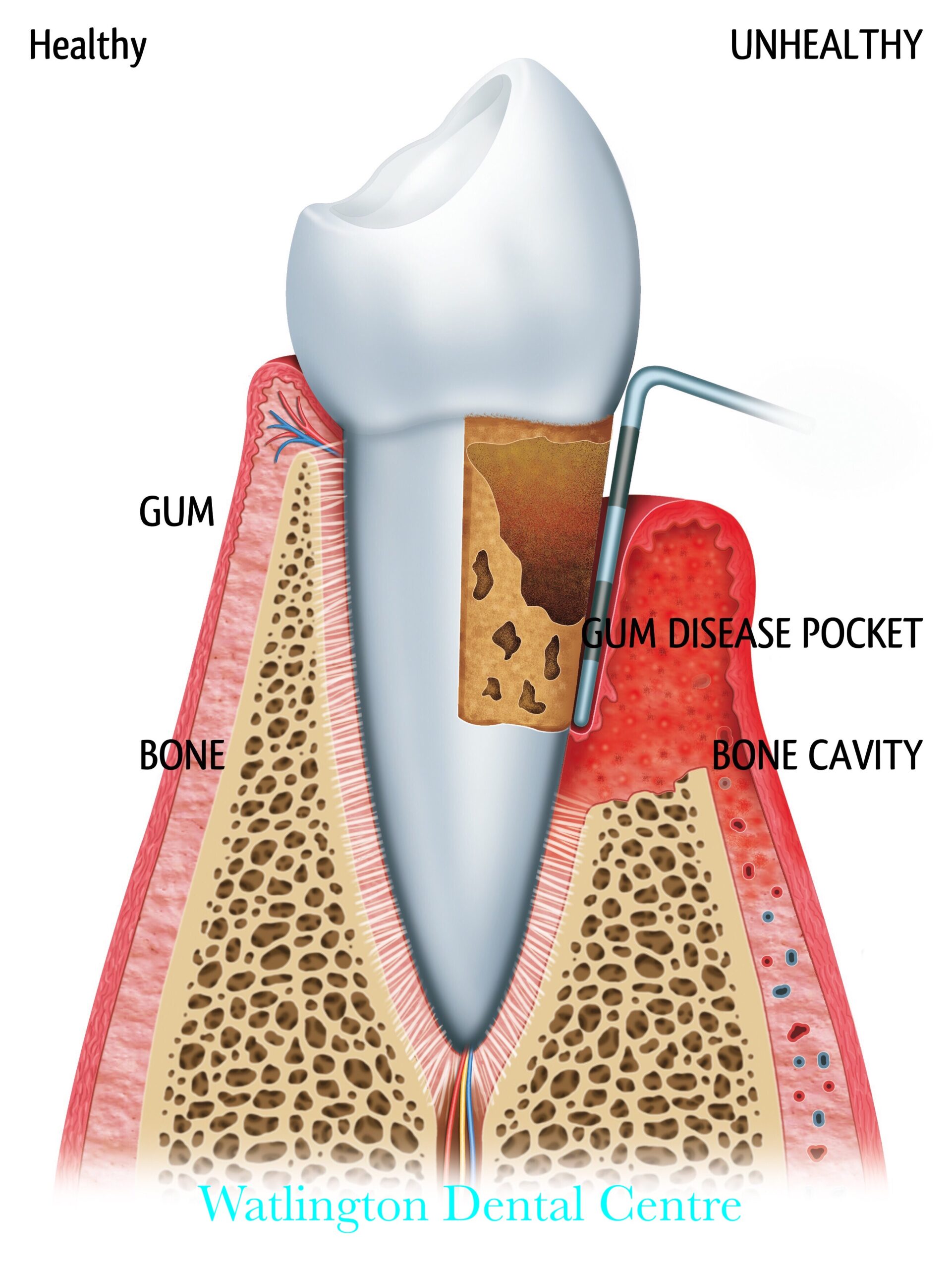Gum disease (Periodontitis), is an inflammatory condition which results in the loss of bone around teeth.
The symptoms of gum disease can be no symptoms, bleeding gums, swollen gums, bad breath, gum recession and loose teeth. Gum disease is not painful and often goes unnoticed and undiagnosed. It has been associated to heart disease, strokes, diabetes, arthritis, osteoporosis and premature births. Evidence suggests it may be contagious.
In the UK it is estimated that 50-90% of the adult population has some degree of gum disease. Severe periodontitis affects 11% of the population.
Ranj Hothi was awarded Master of Science in Periodontology from the Royal London Hospital, where he was trained in the diagnosis and treatment of conditions affecting the gums. At Watlington Dental Centre we perform a wide range of periodontal therapies to control and stabiles your gum health.
Your own care thorough plaque control and attending regular checkups / hygienist appointments, can greatly reduce the risk of gum disease and help prolong the life of your teeth.
It is important to understand that the treatment of periodontal disease is a partnership between the patient and the clinicians who care for the patient. Achieving and maintaining good plaque removal and attending regular dental appointments are a lifelong commitment.
Treatment for gum disease
Periodontal consultation – periodontal charting (measuring bone loss around teeth) is performed for all teeth and diagnostic X- rays are taken to show if bone damage has occurred as a result of the disease process. This allows us to diagnose the periodontal condition and then discuss treatment options.
Oral Hygiene Instruction
This is a critical component in the success of halting the disease progression.
We show you how much plaque you leave behind after brushing, and then show you techniques to improve brushing and plaque removal.
The Hygienic phase
Intensive cleaning below the gums
Periodontal scaling and tooth surface debridement are performed to remove bacteria, plaque and the resulting calculus and to smooth the root surfaces, making it harder for plaque to congregate in these areas. This is more than the ‘scale and polish’ that you may be familiar with. After your gums are numbed, a thin instrument is placed between the gum and tooth in order to remove the infected area.
The number of visits needed depends on how much disease you have. More appointments may also be required if you have difficulty removing plaque.
A review appointment, eight weeks after treatment is needed to see how well your gums have responded to treatment and to check your plaque control. Any areas that have not responded as well as we would like, will be highlighted at the review appointment and if necessary, any further gum treatment can be discussed.
Corrective phase
When more advanced periodontitis exists, the best result of treatment (decrease in pocket depths and bleeding) can only be achieved with gum surgery.
In this phase of treatment, we numb your gums and gently lift them in order to clean & scale the deeper parts of the roots. Exposing the root surface in this way allows us to treat these areas thoroughly. The gum is then secured with soft stitches and these stitches are removed during a short appointment 1 week later.
Supportive phase
Once the active phase of treatment is complete and gum health is stabilized, it is extremely important that patients are seen on a regular basis (usually every three months), for routine basic cleaning. We call this a maintenance programme. Patients in a maintenance programme, are supported to carry out their own home care tooth brushing. It has been proved, patients on a maintenance programme have been the best chance for prevention of further periodontal disease and maintaining long term periodontal health.

